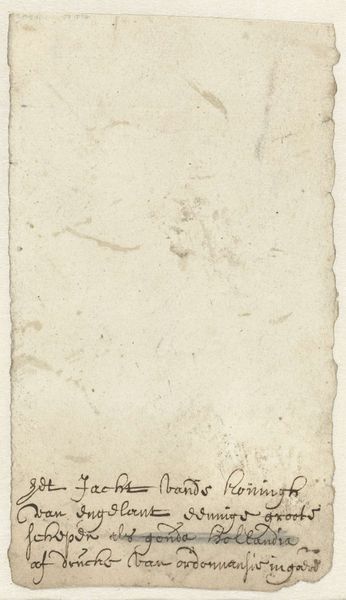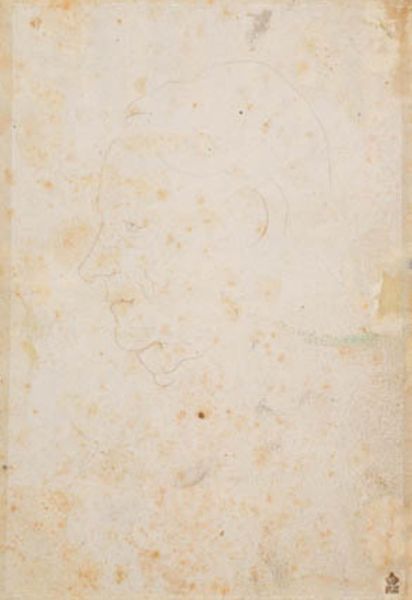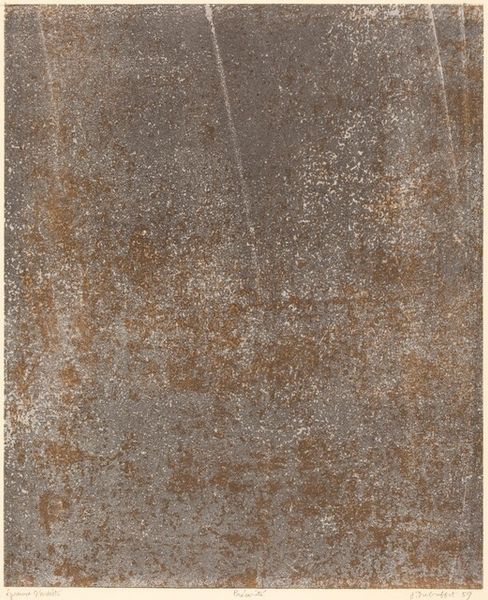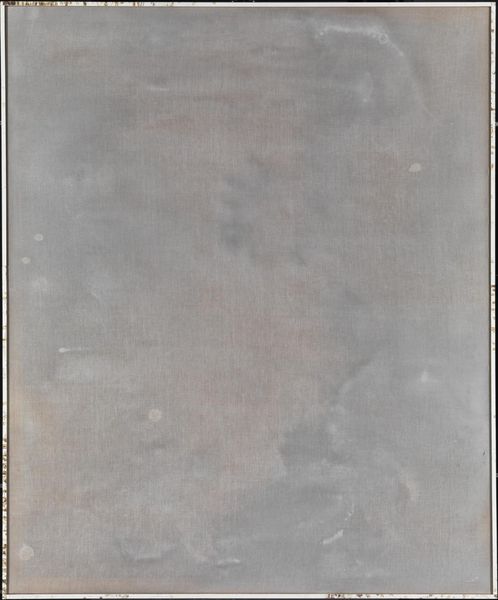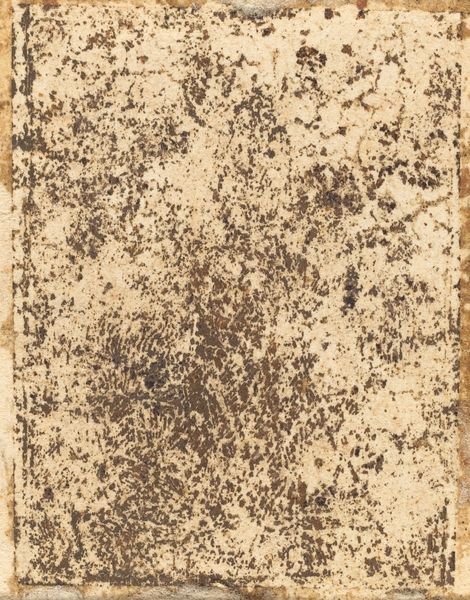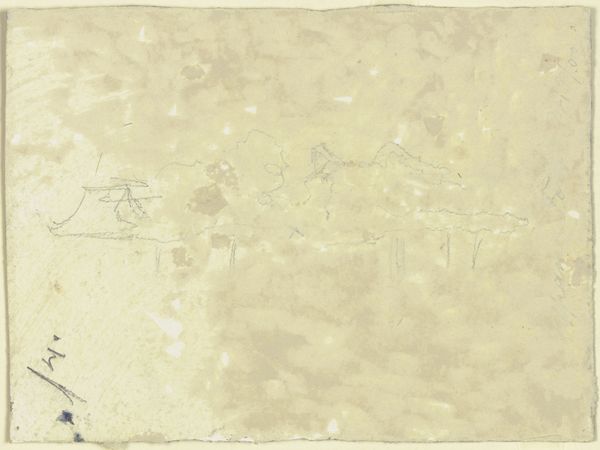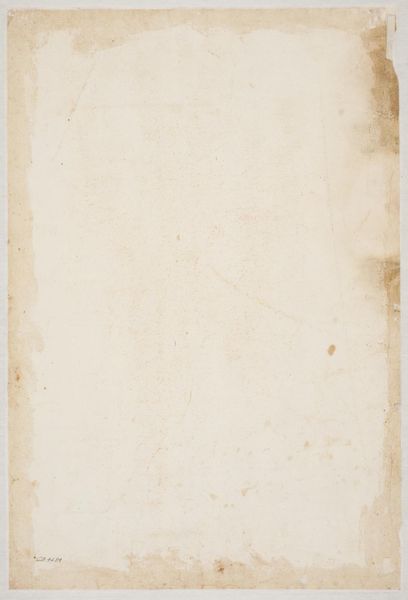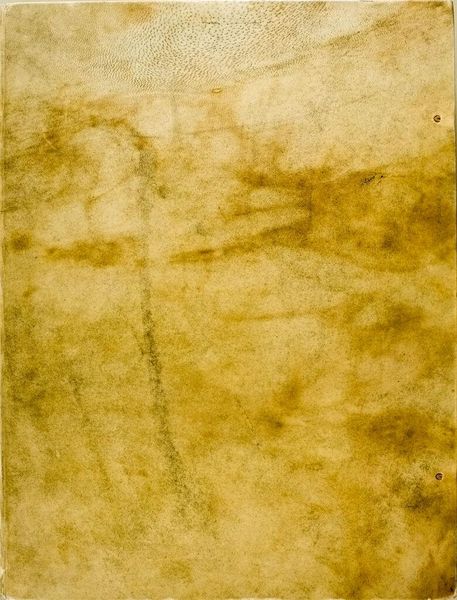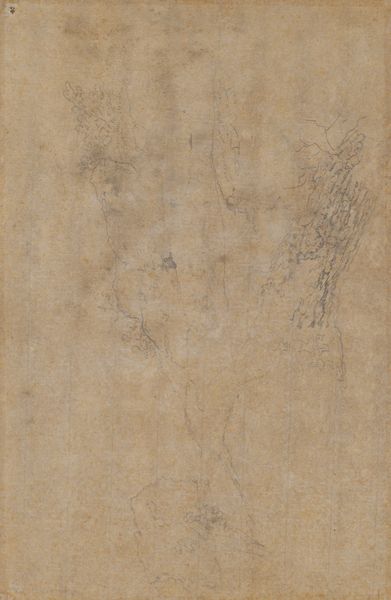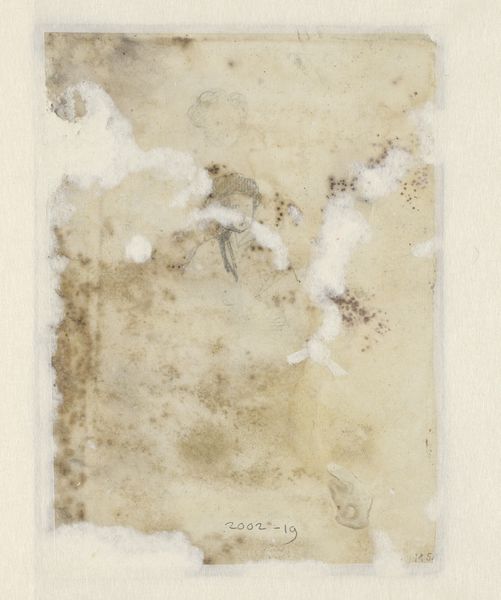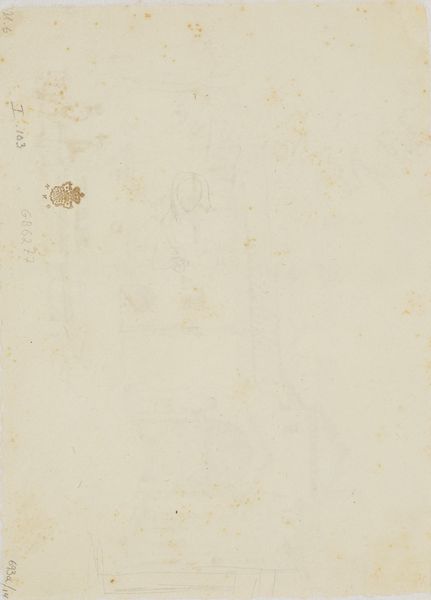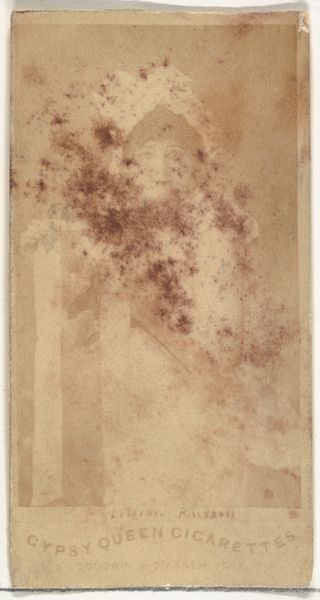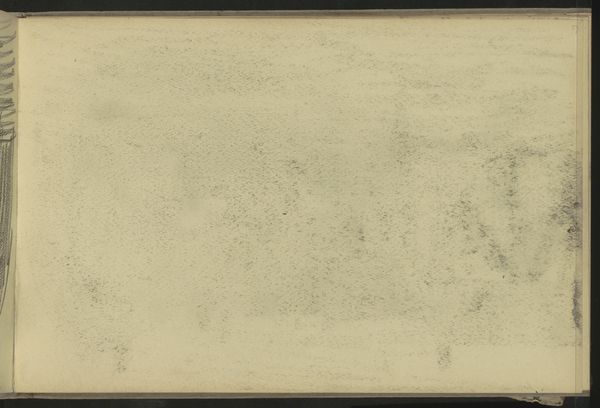
drawing, paper, graphite
#
drawing
#
landscape
#
paper
#
line
#
graphite
Dimensions: 95 × 83 mm
Copyright: Public Domain
Curator: This small drawing, titled "Illegible Sketch," is attributed to John Sell Cotman. The museum dates it to an indeterminate period. It's a graphite drawing on paper. What strikes you immediately about it? Editor: Honestly, its fragility. The paper looks so aged and worn, and the lines themselves are incredibly faint. It feels like a whisper from the past, almost imperceptible. What's interesting, however, is that something seemingly unfinished ended up here. Curator: Indeed, what makes this intriguing is Cotman’s working process. His commitment to sketching en plein air reflects the emerging aesthetics of landscape and how directly confronting material and environment informed an artistic movement. One could ask, why keep it at all? Or perhaps, for whom was this never “really” intended? Editor: The location and use, its inherent status of "sketch", bring up other questions related to gender, class, labor and identity as social forces at play when thinking of an artist, even when apparently simply "sketching outdoors.” But yes, speaking more about form, the parallel lines creating this flat shading might also emphasize ideas of work itself: what and how can labor become formalized, aestheticized? Curator: These repeated lines suggest that Cotman, when looking closely at a location, thought deeply about building something. We see a foundation—or a ruin—that he seemed ready to spend effort recreating. What does its state mean for this relationship between art and labor? What value do you give it? Editor: Well, I still have the idea of social identity on my mind. I wonder how he perceived his work, being an educated, and employed professional, but still subject to social constraints inherent to those that “work” in relation to an upper class, such as sketching grounds belonging to a patron. The subtle hint, if any, would come through form; this could explain a self-aware depiction of "illegible", an “unfinished labor". Curator: That’s a great consideration of the role. This is an intimate glimpse into the artist's practice and raises larger points about materiality and the making of art in the past. The work offers, perhaps, even further discussions. Editor: Absolutely. Seeing a quick notation makes me also consider what kind of audience might better understand or be more involved with works in progress or discarded, which could trigger entirely other narratives to challenge hierarchies around labor or identity.
Comments
No comments
Be the first to comment and join the conversation on the ultimate creative platform.
